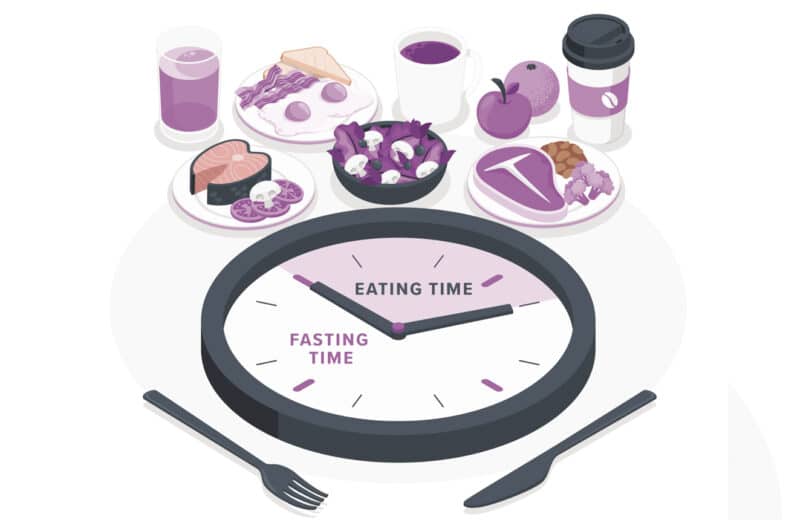It seems that every week brings a new fad diet or a new missive telling you how to eat and how to exercise. Such information can be overwhelming, especially for those who have not been active for decades. But when implementing food and fitness strategies in your 50s, 60s and 70s, even small changes can add up to big health benefits.
Dismayed by all the confusing information about nutrition and exercise, especially for people over 50, Christine Rosenbloom, PhD, RDN, a former nutrition professor and registered dietitian nutritionist, and Bob Murray, PhD, an exercise physiologist and managing principal of a sports science consulting company in Crystal Lake, decided to team up.
To help people get on a healthier path, the two collaborated on their book Food & Fitness After 50: Eat Well, Move Well, Be Well, published the Academy of Nutrition and Dietetics in Chicago.
“People are really confused, and as they get older they’re hungry for good nutrition and exercise information,” Rosenbloom says. “We wanted to write a book that is common sense — but isn’t always common practice — to help them get on a healthy path.”
The book is divided into three sections: eating well, moving well and being well. The first section discusses healthy eating plans, including the Mediterranean diet, Dietary Approaches to Stop Hypertension (DASH), Flexitarian, and MIND (a combination of Mediterranean and DASH diets).
“Everyone always asks what’s the best [diet], and I always say there’s really no best, but there are lots of goods,” Rosenbloom says. “You have to do something that really works for you.”
When it comes to nutrition and eating plans, it’s important to keep in mind that the science of nutrition evolves over time, says Jen Bruning, MS, RDN, LDN, a Chicago dietitian and spokeswoman for the Academy of Nutrition and Dietetics.
“It’s common for people of any age to look back on information they were given years ago and assume it’s still current today,” Bruning says. But nutritional advice changes. “This means you shouldn’t assume that what was once believed to be true is still the most accurate information, like eggs being bad for us or low-fat diets being inherently good.”
The main area where people of any age should focus is portion size, Rosenbloom says. For instance, a 16-ounce steak is actually four servings. “That’s where people get in trouble,” she says. “Start thinking about portions. Pull out your measuring cups and bowls. I had one woman do this, and she realized that she had been eating four servings of cereal. What does one serving of cereal look like? What does a half cup of noodles look like?”
Bruning recommends starting with the USDA’s MyPlate guidelines to see how your diet compares to recommendations. “If you have a concern about your nutrition, speak with a registered dietitian to get a more in-depth assessment of where you’re at,” Bruning adds.
It’s possible to eat a healthy diet and still enjoy your food. “My philosophy is you can eat everything you want, but you just can’t eat it all the time,” Rosenbloom says.
“Making healthy choices is important, but so is feeling satisfied and fulfilled by our food choices,” Bruning says. “Make the conscious choice to do what’s best for your individual self. That might mean more veggies and whole grains, but it might also mean that you indulge in favorites at times, too.”
On the fitness side, both Bruning and Rosenbloom emphasize the same message: If you’re not moving, get moving. “Even if it’s just 10 minutes a day, start moving,” Rosenbloom says. “Especially as we get older, it’s important to keep your muscle mass, as you can lose 10 to 15 percent of your muscle mass every 10 years if you don’t work on it.”
“That’s never more true than for those over 50,” says Bruning. “It becomes harder to put on and maintain lean muscle as we age, so keep moving!”
Personal fitness devices such as Fitbits can be good because they remind people to keep active, such as taking 250 steps if you’ve been sitting too long. “It’s those little steps for the long haul that can make a big difference,” Bruning says.
Bruning also recommends setting reasonable goals. “Expecting to run a marathon in your first six months of beginning a running regimen may not be realistic, but maybe a 5K is,” she says.
If you haven’t been active, consult with your physician before starting a physical regimen, Bruning says, and find activities that interest you. “Pick something you’re excited to try,” she says. “If you aren’t enjoying yourself, you aren’t going to stick with it for very long.”
The main thing is to find some sort of exercise that you will regularly participate in. “When people ask me what the best exercise is, I say, ‘Whatever you will do on a regular basis,’” Rosenbloom says.
After you’ve established a good routine, challenge yourself and step things up incrementally, she says. It’s important to work on flexibility, balance and agility, which can prevent falls. “I realized that I was starting to lose flexibility, so I started doing yoga twice a week,” Rosenbloom says.
Besides eating well and moving well, stress management is also a component of good health. “As we get older, it’s important to have a good network of supportive friends,” Rosenbloom says. Also, make sure you’re getting seven to eight hours of sleep and receiving recommended vaccines, she says.
But no matter your age, both Rosenbloom and Bruning say that it’s important to focus on fitness. “Finding a balance of health and enjoyment is a good goal for any age,” Bruning says.
And it’s never too late, Rosenbloom adds. “That’s our big message. I remind people that, statistically, if you make it to 65 you will live another 20 years. How do you want those next 20 years to be? Even if you’re just starting small, there’s so much you can do.”













